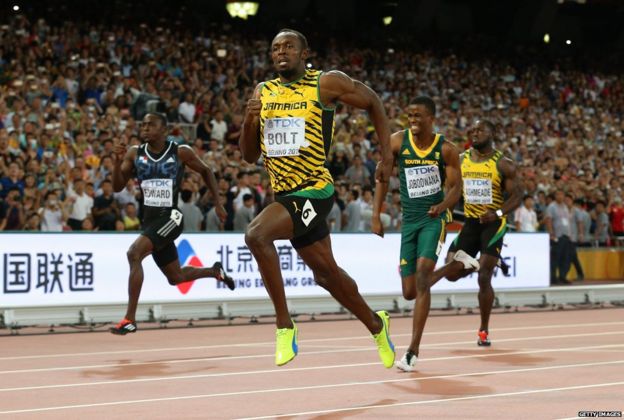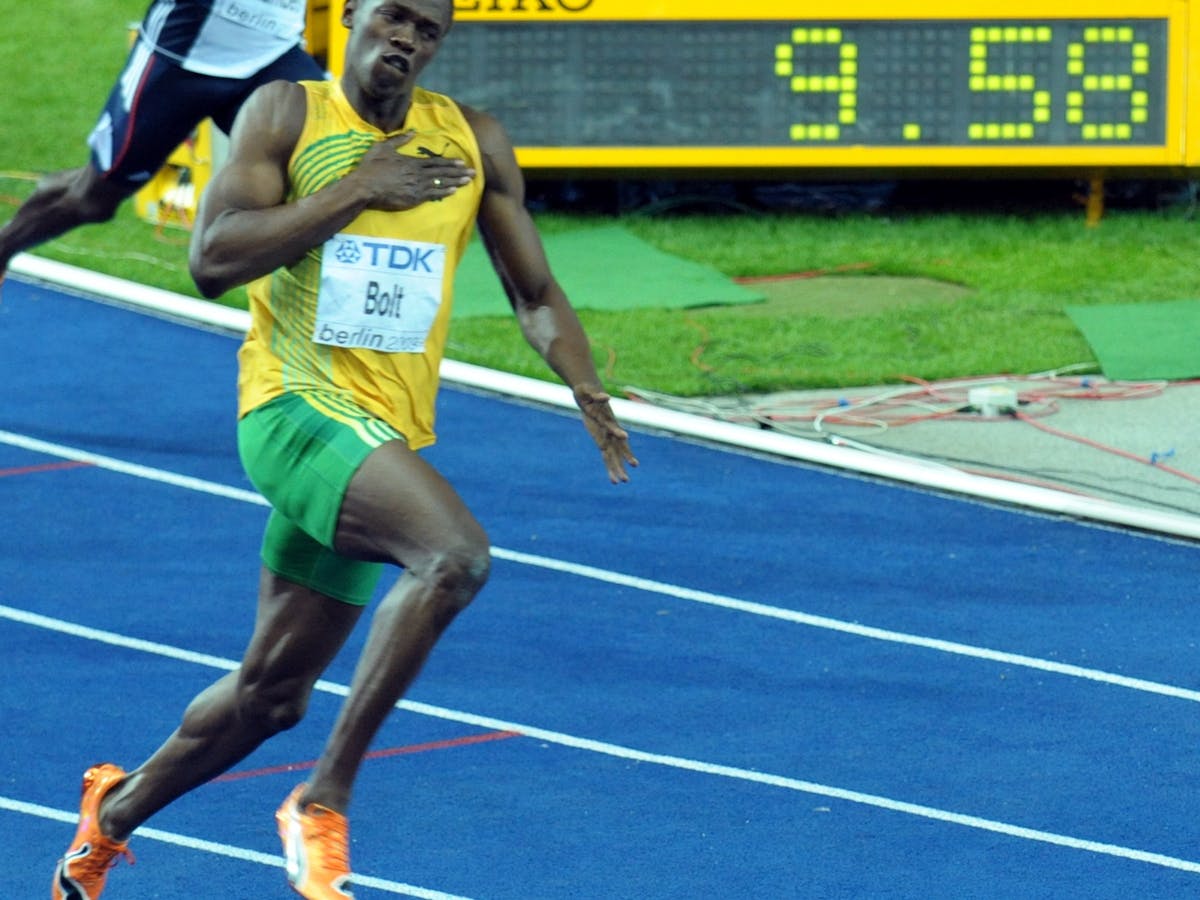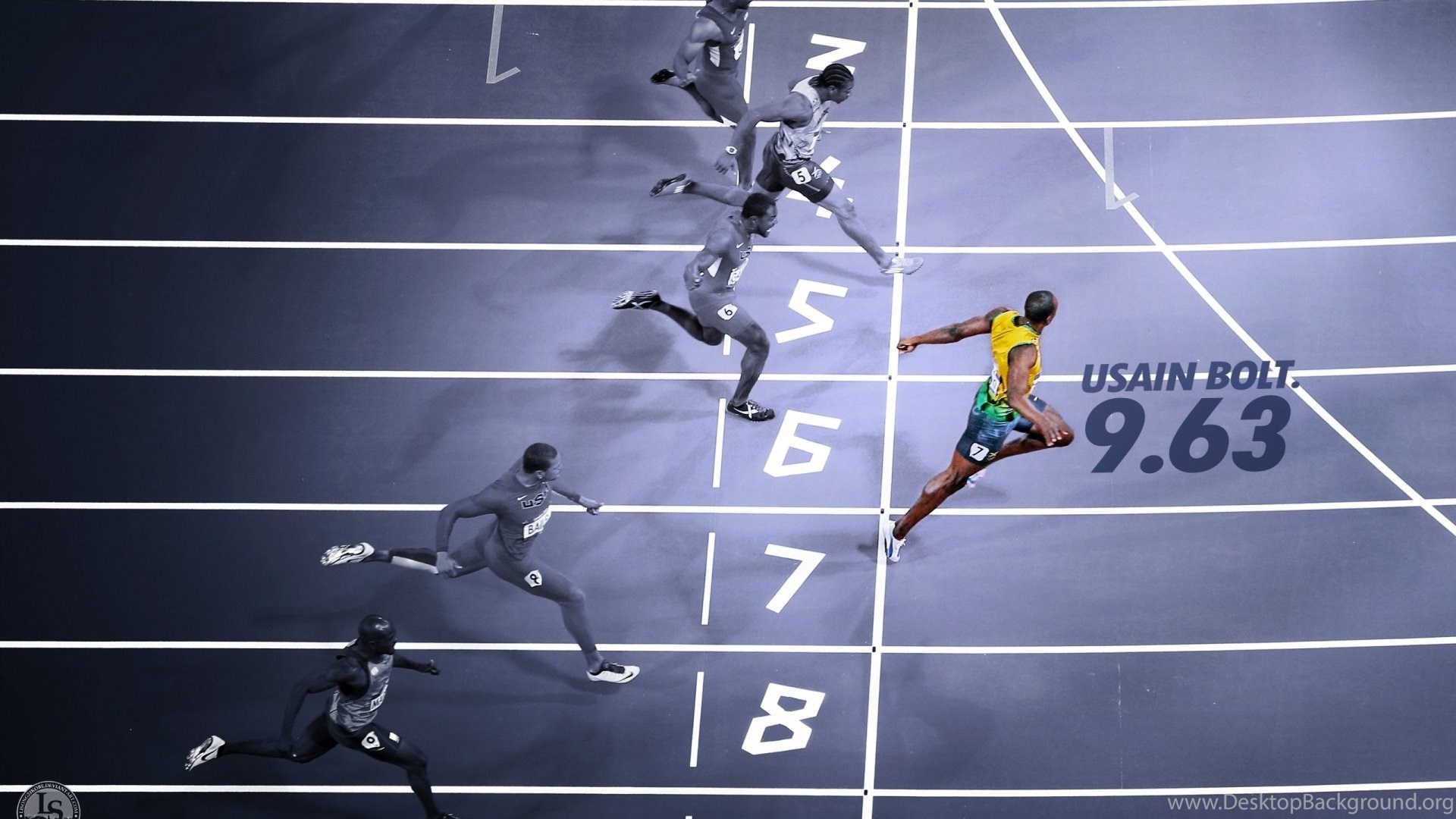Who is Usain Bolt and Why is His Running Technique So Famous?
Usain Bolt, a Jamaican sprinter, is widely regarded as the fastest man in the world. He has dominated the sport of track and field, winning multiple gold medals in Olympic Games and breaking world records in the 100m, 200m, and 4x100m relay events. Bolt’s running technique has garnered significant attention due to its efficiency, fluidity, and sheer speed.
Bolt’s unique running style has had a substantial impact on the world of athletics. His success has inspired countless aspiring athletes and revolutionized the way coaches and trainers approach sprinting techniques. By examining Usain Bolt’s running technique, runners and fitness enthusiasts can gain valuable insights into mastering their craft and enhancing their performance.
Analyzing Usain Bolt’s Running Mechanics: A Step-by-Step Breakdown
Usain Bolt’s running technique is renowned for its exceptional efficiency and speed. By examining his posture, leg action, arm swing, and foot strike, we can better understand the elements that contribute to his success.
Running Posture
Bolt maintains an upright posture, with his torso slightly leaning forward. This position allows him to minimize air resistance and maximize power transfer from his legs to the ground. In contrast, less experienced runners often hunch over, which restricts their breathing and reduces efficiency.
Leg Action
Bolt’s legs move in a rapid, fluid motion, with his knees driving up and back. This action generates significant power and propels him forward at an incredible speed. Inexperienced runners may struggle with maintaining this rapid leg action, often due to insufficient strength or flexibility.
Arm Swing
Bolt’s arm swing complements his leg action, with his arms driving back and forth in a relaxed, rhythmic motion. This coordinated movement helps maintain balance and stability while also contributing to overall speed. Many novice runners neglect their arm swing, focusing solely on their legs, which can negatively impact their running efficiency.
Foot Strike
Bolt’s foot strike is midfoot, which reduces the impact on his joints and muscles compared to a heel strike. This landing style also allows for a smoother transition from ground contact to the swing phase of his running gait. Transitioning to a midfoot or forefoot strike can help runners improve their running economy and reduce the risk of injury.
Comparing Usain Bolt’s running technique with that of average sprinters reveals several key differences. Bolt’s superior posture, powerful leg action, coordinated arm swing, and efficient foot strike contribute to his unmatched speed and efficiency on the track.
How to Mimic Usain Bolt’s Running Technique: A Comprehensive Guide
To incorporate elements of Usain Bolt’s running technique into your own training, consider the following actionable tips and exercises. By focusing on drills, strength training, and flexibility exercises, you can improve your running efficiency and potentially enhance your speed.
Drills
Incorporate the following drills into your warm-up routine to enhance your running technique:
- A-Skips: Drive your knees up while skipping forward, focusing on a quick and powerful leg action.
- Butt Kicks: While jogging slowly, focus on kicking your heels up towards your glutes, improving your leg turnover and hamstring flexibility.
- High Knees: Run in place, driving your knees up as high as possible, working on your leg strength and power.
Strength Training
Strength training can help improve your running power and efficiency. Consider the following exercises:
- Squats: Build lower body strength and power, targeting your quadriceps, hamstrings, and glutes.
- Lunges: Improve single-leg strength and stability, focusing on proper running posture and alignment.
- Deadlifts: Strengthen your hamstrings and glutes, enhancing your running power and reducing the risk of injury.
Flexibility Exercises
Flexibility exercises can help improve your running technique and reduce the risk of injury. Consider the following:
- Hip Flexor Stretches: Improve your hip flexor mobility, allowing for a more efficient running posture.
- Calf Stretches: Enhance your calf flexibility, reducing the risk of shin splints and Achilles tendon injuries.
- Quad Stretches: Stretch your quadriceps muscles, improving your running posture and reducing the risk of knee pain.
By incorporating these drills, strength training exercises, and flexibility workouts into your routine, you can work towards mimicking Usain Bolt’s running technique and potentially improve your running performance.
The Science Behind Usain Bolt’s Running Technique: What Makes Him So Fast?
Usain Bolt’s running technique is a marvel of biomechanics and physics. By examining his stride length, stride frequency, and ground reaction forces, we can better understand the factors that contribute to his incredible speed.
Stride Length
Bolt’s stride length, the distance covered with each step, is a significant factor in his success. On average, Bolt covers 2.44 meters (7.97 feet) per stride at top speed. This extended stride length allows him to cover more ground with each step, reducing the number of steps required to complete a race.
Stride Frequency
Stride frequency, or the number of steps taken per minute, also plays a crucial role in Bolt’s running technique. At top speed, Bolt maintains a stride frequency of approximately 4.4 steps per second. This rapid stride frequency, combined with his long stride length, enables Bolt to reach unparalleled speeds on the track.
Ground Reaction Forces
Ground reaction forces refer to the forces exerted on the body in response to contact with the ground. Bolt’s ability to generate and absorb these forces efficiently contributes to his impressive running economy and speed. By optimizing his posture, leg action, and foot strike, Bolt minimizes energy loss and maximizes power transfer during each stride.
Genetics and Training
While Bolt’s running technique is undeniably exceptional, his success cannot be attributed solely to his natural abilities. Genetics play a role in his physical attributes, such as his height, muscle fiber composition, and fast-twitch muscle fibers. However, Bolt’s training regimen, which includes a focus on strength, power, and speed development, has been instrumental in honing his running technique and achieving his record-breaking performances.
Understanding the science behind Usain Bolt’s running technique provides valuable insights into the factors that contribute to his success. By incorporating elements of his style, such as optimal stride length, stride frequency, and ground reaction forces, runners can potentially improve their running efficiency and performance.
Common Mistakes to Avoid When Trying to Imitate Usain Bolt’s Running Technique
While Usain Bolt’s running technique is a remarkable example of efficiency and speed, many runners encounter challenges when attempting to mimic his style. Here are common mistakes to avoid and alternative solutions to help you improve your running technique.
Overstriding
Overstriding, or reaching too far forward with each step, can lead to inefficiency and increased injury risk. To avoid overstriding, focus on landing midfoot beneath your center of gravity, maintaining a quick cadence, and driving your knees forward.
Poor Posture
Slouching or hunching over during running can negatively impact your breathing and running efficiency. Instead, maintain an upright posture, with your shoulders relaxed and your chest open. Imagine a string pulling you upward from the top of your head to promote good posture.
Inadequate Arm Swing
An insufficient arm swing can limit your power transfer and balance during running. To improve your arm swing, keep your arms relaxed, bent at around 90 degrees, and drive them backward and forward in a controlled motion. Avoid crossing your arms over your body or letting them swing across your chest.
Neglecting Hip Flexibility
Tight hip flexors can hinder your running technique and lead to inefficiency. Incorporate hip flexor stretches, such as lunges and pigeon poses, into your flexibility routine to maintain optimal hip mobility.
Ignoring Strength Training
Neglecting strength training can limit your ability to generate power and maintain proper running form. Focus on lower body exercises, such as squats, lunges, and deadlifts, to build the strength necessary for efficient running.
By avoiding these common mistakes and focusing on alternative solutions, runners can work towards incorporating elements of Usain Bolt’s running technique into their own style, ultimately improving their efficiency and performance.
Usain Bolt’s Training Regimen: Insights into His Preparation
Usain Bolt’s running technique is the result of years of dedicated training, refinement, and innovation. To better understand how Bolt developed his remarkable style, let’s explore his training routine, exercise selection, volume, intensity, and recovery methods.
Exercise Selection
Bolt’s training routine includes a mix of strength, power, and speed exercises to develop the necessary physical attributes for sprinting. Some of his favorite exercises include squats, lunges, deadlifts, plyometrics, and various sprint drills.
Volume and Intensity
Bolt’s training regimen features a high volume of exercises with varying intensities. He typically performs multiple sets and repetitions of each exercise, ensuring that he challenges his muscles and improves his overall fitness. By progressively increasing the volume and intensity of his workouts, Bolt has been able to maintain his dominance in the sport.
Recovery Methods
Proper recovery is crucial for any elite athlete, and Bolt is no exception. He emphasizes the importance of rest, nutrition, and rehabilitation to support his training and performance. Bolt incorporates techniques such as massage, stretching, and ice baths to aid in his recovery and reduce the risk of injury.
Training Evolution
Over the years, Bolt’s training has evolved to address his changing needs and goals. As he has matured as an athlete, he has adapted his training routine to focus on maintaining his speed, power, and technique while minimizing the risk of injury. By working closely with his coaches and support staff, Bolt has been able to refine his training methods and continue to excel in the sport.
Usain Bolt’s training regimen has played a significant role in shaping his running technique and solidifying his status as the fastest man in the world. By incorporating elements of his training approach, runners can work towards improving their running efficiency, power, and speed.
Incorporating Usain Bolt’s Running Technique into Different Running Distances
Usain Bolt’s running technique is renowned for its efficiency and speed, making it a valuable source of inspiration for runners of all distances. While Bolt primarily competes in the 100m and 200m events, elements of his running style can be adapted to various distances, such as 400m and beyond. Here, we discuss how to incorporate Bolt’s technique into different running events and offer suggestions for adjustments based on each event’s specific demands.
100m and 200m Races
In shorter sprints, focus on maintaining an upright posture, driving your knees forward, and generating powerful arm swings. Aim for a long stride length and quick stride frequency, similar to Bolt’s style. Additionally, practice explosive starts and transitions to maintain speed throughout the race.
400m Race
In the 400m event, runners must balance speed and endurance. While maintaining Bolt’s running posture and arm swing, focus on conserving energy during the first half of the race. Adjust your stride length and frequency to match the event’s demands, prioritizing consistency over explosiveness. As the race progresses, gradually increase your intensity, saving enough energy for a strong finish.
Middle-Distance and Long-Distance Races
In middle-distance and long-distance events, the emphasis shifts from explosive speed to sustained pace and endurance. While Bolt’s running technique is not directly applicable to these events, incorporating elements of his posture, arm swing, and foot strike can still improve your running efficiency. Adjust your stride length and frequency to maintain a steady, sustainable pace, and focus on proper breathing and relaxation to conserve energy throughout the race.
By understanding how to adapt Usain Bolt’s running technique to various distances, runners can enhance their performance and efficiency. Regardless of the event, always prioritize proper coaching, guidance, and self-awareness to master the craft of sprinting and achieve your personal best.
Inspiring a New Generation: How Usain Bolt’s Running Technique Influences Future Sprinters
Usain Bolt’s running technique has left an indelible mark on the world of athletics, inspiring countless aspiring athletes to pursue their dreams of becoming world-class sprinters. By examining Bolt’s influence on the athletics community, we can better understand the importance of proper coaching, guidance, and self-awareness in mastering the craft of sprinting.
Role Model for Aspiring Athletes
Usain Bolt’s success and charisma have made him a global icon, inspiring countless young athletes to take up sprinting. His captivating performances and magnetic personality have captured the hearts of fans worldwide, motivating them to strive for greatness in their own athletic pursuits.
Proper Coaching and Guidance
To successfully mimic Usain Bolt’s running technique, aspiring athletes must work closely with experienced coaches and trainers. These professionals can provide personalized guidance, helping athletes identify their strengths and weaknesses and develop a tailored training plan to address their specific needs.
Self-Awareness and Mastery
Mastering the craft of sprinting requires self-awareness and a deep understanding of one’s body mechanics. By studying Bolt’s running technique and incorporating elements of his style into their own training, athletes can enhance their self-awareness and develop a more efficient, effective running style. However, it is essential to remember that each athlete is unique, and what works for Bolt may not work identically for everyone. Adaptation and self-discovery are crucial components of the learning process.
Usain Bolt’s running technique has had a profound impact on the athletics community, inspiring a new generation of sprinters to pursue their dreams and reach new heights in the sport. By emphasizing proper coaching, guidance, and self-awareness, aspiring athletes can learn from Bolt’s example and develop their own exceptional running styles.









